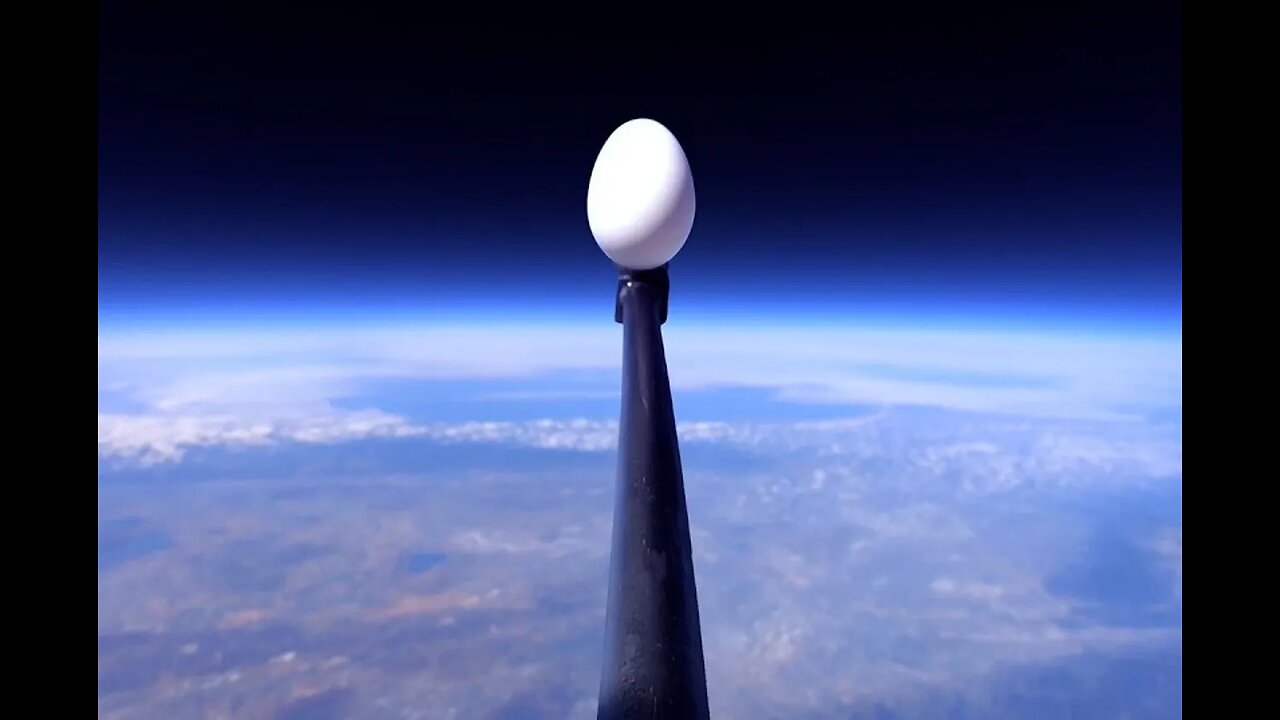Premium Only Content

Egg Drop From Space
The "Egg Drop From Space" experiment involves launching an egg into the upper atmosphere using a high-altitude balloon or other similar devices. The primary goal of this experiment is to test the effects of near-space conditions, such as low pressure and extreme cold, on the egg's structural integrity and whether it can survive the fall back to Earth.
The experiment typically consists of the following steps:
Preparation: Engineers and students design a protective capsule or container for the egg. The capsule is equipped with cushioning materials, shock absorbers, and insulation to shield the egg from the harsh conditions of space and its descent back to the Earth's surface.
Payload Integration: The egg, safely housed within the protective capsule, is attached to the high-altitude balloon along with necessary tracking equipment, cameras, and sensors. These devices help capture data and imagery during the journey.
Launch: The balloon is released into the atmosphere, carrying the egg and its protective capsule. As the balloon ascends, it passes through different layers of the atmosphere, experiencing changing conditions such as temperature, pressure, and air density.
Near-Space Conditions: The balloon reaches near-space altitudes, often referred to as the stratosphere. In this region, the atmospheric pressure is significantly lower, and temperatures can drop to extremely cold levels. The experiment aims to observe how the protective capsule and its contents fare under these conditions.
Descent: Eventually, the balloon reaches its maximum altitude, and it bursts due to the lower pressure at high altitudes. The protective capsule, along with the egg, begins its descent back to Earth.
Recovery: Parachutes or other mechanisms are usually deployed to slow down the descent of the capsule. Ground teams track the capsule's location using GPS and radio communication. Once the capsule lands, the experimenters retrieve it and examine the egg to see if it has survived the journey intact.
Data Analysis: The data collected from sensors and cameras during the flight are analyzed to understand the conditions the egg and the capsule experienced throughout the journey. This analysis helps researchers and students learn more about the effects of space-like conditions on materials and structures.
-
 LIVE
LIVE
TheCrucible
1 hour agoThe Extravaganza! EP: 31 (9/03/25
10,547 watching -
 1:28:57
1:28:57
Redacted News
2 hours agoBREAKING! Putin's DEVASTATING news for Europe | Secret UFO Space Base in Huntsville | Redacted Live
63.4K52 -
 1:17:49
1:17:49
vivafrei
4 hours agoEpstein Press Conference DEBACLE! Missing Minute FOUND? Canada Continues to Fall! & MORE!
74.7K53 -
 29:30
29:30
Stephen Gardner
2 hours ago🟢YES! Trump’s Doing It! Ben Shapiro UNLEASHES on Democrat STUPIDITY!
19.5K10 -
 LIVE
LIVE
Dr Disrespect
6 hours ago🔴LIVE - DR DISRESPECT - METAL EDEN - NEW 2025 SCI-FI FPS LAUNCH STREAM
1,114 watching -
 LIVE
LIVE
StoneMountain64
4 hours agoBattlefield's Easter Egg Phantom Project is STILL ALIVE
129 watching -
 LIVE
LIVE
LFA TV
11 hours agoLFA TV ALL DAY STREAM - WEDNESDAY 9/3/25
1,395 watching -
 LIVE
LIVE
freecastle
7 hours agoTAKE UP YOUR CROSS- Love...Light...TRUTH!
172 watching -
 1:50:29
1:50:29
The Quartering
4 hours agoEpstein Victims To NAME People, Mutiny Over RFK Jr, Trump Turns On Warp Speed?
130K43 -
 1:33:30
1:33:30
Film Threat
22 hours agoMARVEL ZOMBIES! PLUS DEXTER RESURRECTION | Hollywood on the Rocks
12.7K